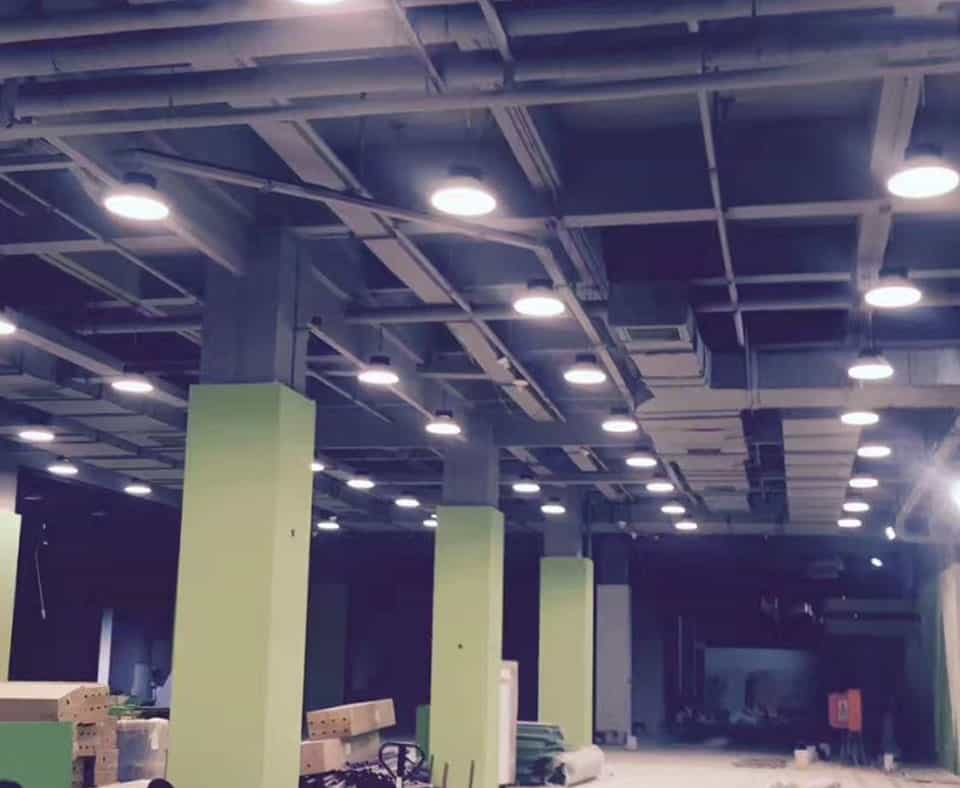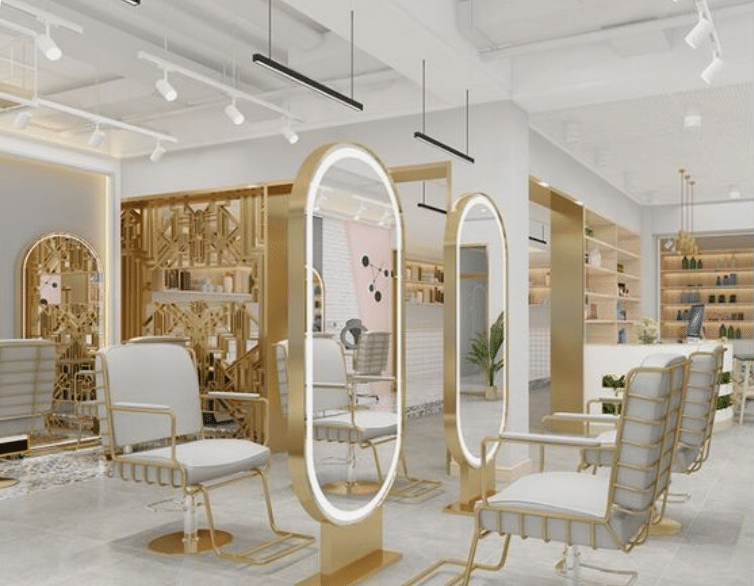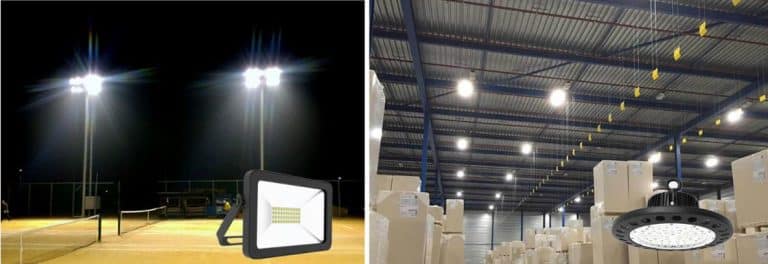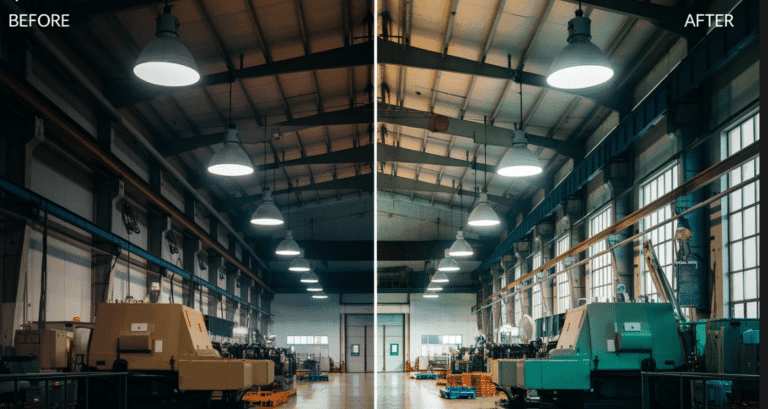In many large-scale commercial or industrial settings, bay lighting is a common sight. These lights may appear similar in design, but in reality, bay lighting is categorized into two types: low bay lighting and high bay lighting. To ensure you make the right choice when selecting bay lighting, it’s essential to understand the distinctions between them.

High bay vs Low bay Definition
Bay lighting is lamp equipment used to illuminate large commercial or industrial spaces, such as factories, warehouses, stadiums, train stations, etc. The bay lights will provide even and evenly distributed light in open areas.
High bay lighting typically refers to fixtures installed on high ceilings, ranging from 20 to 50 feet above the ground. These fixtures are commonly found in locations such as warehouses, hangars, factories, gyms, facilities, and even dairy farms.
Because the light source is positioned at a considerable distance from the floor, the beam angle of industrial lighting is fixed and unchangeable. The higher the fixture is mounted, the greater the illuminated area on the floor.
As a result, the luminous intensity per unit area (measured in foot-candles = lm/ft² or lux = lm/㎡) is relatively lower. Therefore, in some cases, you may need aluminum reflectors with a 60-degree or 90-degree angle or acrylic lenses to direct more light to the desired surface, narrowing the beam and reducing lumen loss to other unnecessary spaces.This becomes particularly important for task lighting if the brightness level in a specific workspace is insufficient.
Having proper industrial lighting can enhance workers’ productivity, go beyond job completion, and boost production. That’s why business owners should wisely consider its benefits and switch to high-quality LED high bay lights.
Most projects usually use 150W-600W as high bay lighting, and UFO style round high bay lights and linear high bay lights are the most common LED fixtures in this application

On the other hand, low bay lighting is defined as lighting for retail stores or workshops with ceiling heights ranging from 12 to 20 feet.
It is designed to have a broad coverage area on the floor, allowing you to use fewer fixtures and save on labor and installation costs. Therefore, aluminum reflectors are generally not needed.
However, this is not an absolute rule.
Sometimes, prism transparent lenses are used for low bay lighting in grocery stores or showrooms. This is because, in certain areas, selective illumination is required to make displayed products more attractive or appealing, rather than uniformly lighting all areas. 60W-100W LED UFO industrial and mining lamps or linear industrial and mining lamps are generally used for low bay lighting
Difference between high bay and low bay lights
- Different luminous flux and different illuminance.
The biggest difference between low bay and high bay lights is the difference in luminous flux. In real life, the luminous flux of low bay and high bay lights does not have a correct dividing line. According to industry experience, those with effective luminous efficiency below 8000lm can be used as low-bay lights (for example, 50W LED low-bay lights); those with more than 8000lm can be called high-bay lights, which are popular 100W 150W 200W UFO high-bay lights on the market. - Different installation height
Low bay lights are suitable for installation in large spaces with a height of 10ft-20ft. In this space, low bay lights can not only provide enough brightness but also can replace the cost of lighting.
In the 20ft-50ft space, high bay lighting is the most suitable choice. - Different beam angle
Because the height of the place required for low-bay lighting is generally low and the illumination requirement is relatively low, it is generally suitable for a large light-emitting angle, about 120°. This light-emitting angle can alternatively expand the irradiation surface to reduce the number and cost of lamp installation.
For high bay lights installed in higher places, in order to maximize the illuminance of the working surface or the ground, it is necessary to use a 45°, 60°, or 90° reflector with a condenser function (UFO LED high bay lights usually Use lenses to achieve condensing), gradually to provide sufficient brightness. - Different Application
Low bay lights are common in some large spaces but low commercial and industrial places, such as grocery stores, retail stores, schools, gas stations, etc.;
It is indeed a high bay light commonly found in large industrial sites such as factories, warehouses, and stadiums. - Different types
From types, the low bay light has been more choices than the high bay light. The high bay includes ufo type, linear high bay, but for the low bay, except for the above type, there are still including troffer low bay, E27/E40 Low bay bulb lights, etc.
In summary, the main differences between high bay and low bay lights lie in their intended ceiling heights, light distribution, output, mounting methods, and application areas. Choosing the right type of lighting fixture for a specific space depends on the ceiling height and lighting requirements of the environment in question.
Whether you need low bay or high bay lights, you can find the right fixtures from our wide range of products. Customized orders are welcome. Contact our lighting specialist right now.

Hello, customers
My name is Ricky Wang, I’m the business manager of GRNLED. I have been in LED lights industry for more than 10 year. Feel free to contact us. I’m happy to provide you the best service and products.
Email: info@grnled.com | WeChat: ledfixture






